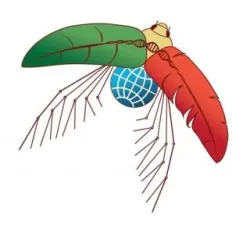
Overview
Explore the history of the Centre for Biodiversity Analysis (CBA) at ANU. Learn about our journey, milestones, and contributions to advancing biodiversity research and global conservation efforts.

Established in 2012, the CBA is a joint initiative of ANU and CSIRO founded on world-class biodiversity science spanning evolutionary biology, genomics, bioinformatics, spatial modelling, population and ecosystem ecology, and paleoecology; and key infrastructure such as the National Biological Collections and advanced genomic and computer laboratories, including the Ecogenomics and Bioinformatics Lab (EBL) The capacity and reach of the CBA was further developed in 2018 with the University of Canberra (UC) joining the Centre.
Our community
The Centre for Biodiversity Analysis is based in Canberra at the ANU, University of Canberra and CSIRO Black Mountain laboratories, and other national CSIRO sites outside Canberra.
The CBA is funded by the Australian National University (Research School of Biology, Fenner School of Environment and Society, College of Science & DVCR), CSIRO (National Research Collections Australia and Health & Biosecurity), and the University of Canberra (Centre for Conservation Ecology and Genetics). See Location & facilities for more information.
The Centre is administered from the Research School of Biology, ANU (see General contact).
We connect biodiversity scientists, students and their research across:
- ANU
- Divisions of Ecology and Evolution (E&E) and Plant Science (PS) in the Research School of Biology (RSB)
- Fenner School of Environment and Society (FSES)
- University of Canberra
- Centre for Conservation Ecology and Genetics (CCEG)
- CSIRO
- National Research Collections Australia (NRCA), Facilities and Collections (Canberra, Townsville and Hobart)
- Health & Biosecurity
- Environomics Future Science Platform
- Atlas of Living Australia
- Land & Water
- Agriculture
The CBA is governed via a Liaison Committee composed of representatives from the business units of all funding partner institutions.
Our activities
Within our core focus of applying cutting-edge applications of genomics and environmental analysis to promote the understanding and conservation of Australia’s unique biodiversity, the CBA supports and coordinates:
- Collaborative projects and synthesis groups
- Training workshops
- Co-supervised ANU/UC-CSIRO students
- Local and international visitors
- Seminars
- Conferences
- Knowledge exchange amongst scientists, policy makers and managers
Please contact the CBA Coordinator if you would like to be included on the CBA’s email list for news, seminar, workshop and funding announcements.
If you would like your lab to be involved in CBA activites and included on our Collaborators page, please send us your contact details and research interests relevant to the scope of the CBA. Post docs and students are considered part of the CBA via their lab group's membership.
Our logo
A DNA strand spans the plant (eucalypt leaf) and animal (feather) components that form the elytra of a beetle - a definitive symbol of biodiversity, comprising an estimated one fifth of all known living organisms on earth. The beetle's membranous hind-wings are phylogenetic trees that, together with the DNA, represent evolutionary biology and biodiversity analysis. A globe, representing ecosystems and spatial ecology, forms the beetle's abdomen. Created by Sharyn Wragg.

